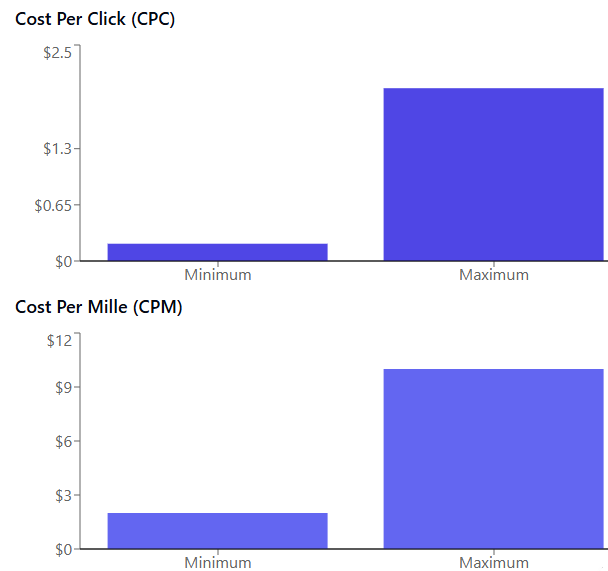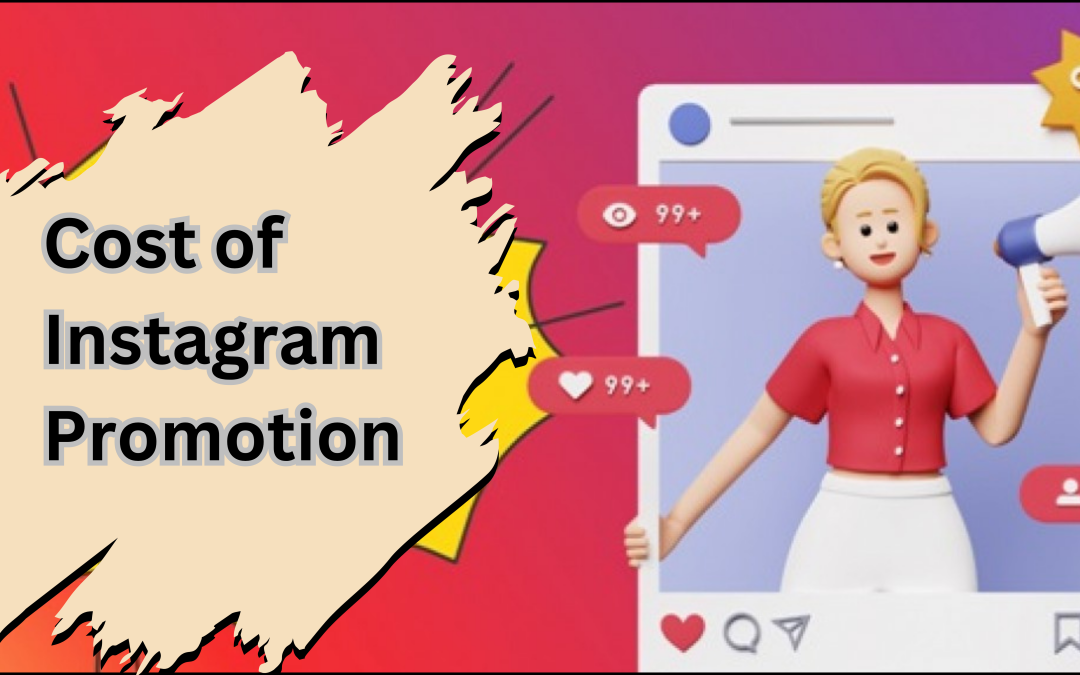Want to know how much it costs to advertise on Instagram? We’ll show you how to get the most out of your money and what things can change the price.
Bidding Type
When you run Instagram ads, one of the first things to decide is how you want to pay for them. This is called the bidding type, and it affects how much your ads will cost and how you can manage your budget.
1. Cost Per Click (CPC)
With CPC, you pay only when someone clicks on your ad. This type of ad works well if you want people to visit your website or a specific page. The cost of each click can change depending on things like how many people are targeting the same audience, how specific your targeting is, and how interesting your ad is.
For businesses, CPC is great for increasing engagement or getting people to take action, like clicking a link or filling out a form. You have full control over your budget since you pay only for actual clicks. To make sure you’re not spending too much, you can track how many clicks you’re getting and improve your ads based on their performance.
2. Cost Per Mille (CPM)
With CPM, you pay every time your ad is shown 1,000 times. This is a good choice if your goal is to make more people aware of your brand and reach a large audience. Since you’re paying for people to see your ad rather than click on it, CPM works best for campaigns where you want to be noticed rather than get immediate responses.
For businesses, CPM is useful to increase visibility and show ads to many people. The price for 1,000 views can depend on factors like your audience and where the ad is placed. Ads that people like and engage with often cost less per view, so making high-quality ads can save money while reaching more people.
3. Cost Per Action (CPA)
With CPA, you pay only when someone does something specific, like signing up for your newsletter, buying a product, or downloading your app. This is a results-based option, where you’re charged for actual outcomes instead of just views or clicks.
For businesses, CPA is ideal if you want people to take clear actions that lead to results. Since you only pay for completed actions, it helps you manage your budget efficiently. To make CPA ads successful, you need to keep track of how well they’re doing and make changes if needed. CPA works best when you have specific goals, like increasing sales or gaining new customers.
Ad Placement
Where you place your ads on Instagram is very important. It decides how many people will see your ad, how they interact with it, and how much it will cost. Different placements give different results, and here’s how they work:
1. Feed Ads
Feed ads show up as users scroll through their Instagram feed, mixed with regular posts. These ads can be pictures, carousels, or videos. I like using Feed ads when I want more people to visit my website, sign up for something, or buy a product. But since everyone uses the Feed, it can be more expensive because of competition.
For businesses, Feed ads are good when you want to be noticed by people actively scrolling. To make these ads work better, I always add eye-catching visuals and a clear message about what I want people to do (like click a link or buy something).
2. Story Ads
Story ads show up between the stories users watch on Instagram. They take up the full screen, making them hard to miss. I enjoy using Story ads because they feel fun and less like traditional ads. They are perfect for short promotions or time-sensitive offers.
However, people can skip Story ads quickly, so I make sure my ads look exciting right away. Adding simple text or a button like “Swipe Up” helps people take action. For businesses, Story ads are great when you want quick results, and they usually cost less than Feed ads.
3. Reels Ads
Reels ads appear in Instagram Reels, which is one of the most popular features on Instagram. These ads are short videos that are fun and grab attention. I find Reels ads work really well if you want to reach younger people or show your product in a creative way.
Businesses love Reels ads because they are full-screen, which means users can focus on them. They also cost less than Feed ads because they are still new. By using fun and interesting videos, you can get people to engage with your ad more.
4. Explore Ads
Explore ads appear in the Explore tab, where users look for new content. These ads are great for reaching people who don’t know about your brand yet. Because fewer businesses use Explore ads, they often cost less than Feed ads.
For businesses, Explore ads are perfect for growing your audience and getting noticed by people with specific interests. While these ads may not get instant results, they help your brand reach more people over time.
Targeting Options
Instagram has smart tools that help you show your ads to the right people. These options are important because they help control costs and make sure your ads work well.
1. Demographics
Demographics are about things like age, gender, location, and language. I can use these to show my ads to people who are most likely to like or buy my product. For example, if I’m selling kids’ toys, I can target parents in a specific city.
Businesses can also use demographic targeting for local campaigns or when focusing on a certain age group or gender. This helps ads reach the right people, making them more useful and saving money.
2. Interests
Interest targeting helps me find people who already like similar things, like hobbies, activities, or brands they follow. For example, if I’m selling sports gear, I can target people who like sports or follow fitness pages.
For businesses, this is super helpful because they can focus on people who are already interested in what they offer. When ads match people’s interests, they get more likes, clicks, and sales.
3. Behaviours
Behavioural targeting looks at what people do online, like the things they buy, the devices they use, or the pages they visit. I like using this to reach people who have already shown interest in my product.
For example, if someone visited my website but didn’t buy anything, I can show them an ad to remind them. Businesses love this because it focuses on people who are more likely to buy, making the ads more effective.
4. Custom Audiences
Custom Audiences let me use my own data, like email lists or website visitors, to create a special group for my ads. This is great for reconnecting with people who already know my brand.
For example, if someone downloaded my app but hasn’t used it in a while, I can show them an ad to bring them back. Businesses can use this to turn past visitors into loyal customers.
Competition
I’ve learned that competition affects how much my Instagram ads cost. If many advertisers try to reach the same people, the cost goes up. For businesses, it’s the same—the more brands aiming for the same audience, the more expensive the ads get. In busy industries like fashion or fitness, prices are often higher than in smaller, less popular industries.
To spend less, companies can focus on a specific group of people and change their bids to avoid paying too much.
Campaign Goals
Average Costs
When I run Instagram ads, the cost changes depending on the type of bidding I choose. For CPC (Cost Per Click), I usually pay between $0.20 and $2.00 every time someone clicks on my ad. If I want my ad to be seen more often, I can choose CPM (Cost Per Mille), where I pay around $2.00 to $10.00 for every 1,000 times my ad is shown.
For businesses, knowing these average costs can help them plan their budget and run their ads better.
.

Tips for Controlling Costs
- Set a clear budget and stick to it.
- Use specific targeting choices to reach the intended audience.
- Create high-quality, engaging ads.
- Monitor your campaigns on a regular basis and make adjustments as appropriate.
- Experiment with different ad formats and placements.
FAQs:
1. What factors influence Instagram ad costs?
Instagram ad costs are influenced by bidding types (CPC, CPM, CPA), ad placement, targeting options, competition, and ad quality—the more targeted and relevant the ad, the lower the cost. Competition within your audience segment also plays a significant role in driving costs up.
2. How much does Instagram charge per click or impression?
CPC typically ranges from $0.20 to $2.00 per click, depending on targeting and competition. CPM generally costs between $2.00 and $10.00 per 1,000 impressions. CPA costs vary based on the specific action you want users to take.
3. How can I control my Instagram ad budget?
Set a clear budget and use precise targeting to reach the right audience. Regularly monitor your campaign’s performance to optimize and adjust. Experiment with different ad placements to see which delivers the best ROI.
4. Why are Instagram ads expensive?
Instagram ads can be expensive due to high competition, particularly in popular industries. Broad targeting or low-quality ads can increase costs. Ads placed in high-visibility sections, like the Feed, may also result in higher costs.
5. Are there any tips to lower my Instagram ad costs?
Refine your targeting to reach relevant users and optimize your creatives for higher engagement. Use affordable placements like Stories or Reels. A/B test campaigns to find the most cost-effective strategies for your ads.
Conclusion
The cost of Instagram promotion isn’t fixed; it varies based on several factors that individuals and businesses can manage. By understanding these factors and adjusting strategies, you can optimize your ad spend and achieve desired results. Whether you’re an individual or a business, it’s crucial to test and refine your campaigns for the best outcomes.
